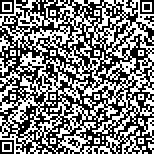| 摘要: |
| 东沙群岛及其邻近海区(简称东沙海区)位于南海北部大陆边缘,东邻马尼拉俯冲构造带。为了讨论晚新生代以来东沙海区的构造变形特征,从中找出吕宋弧对中国东南大陆边缘碰撞的构造相关,特别是8Ma以来的吕宋岛弧和中国大陆边缘之间构造消减过程的响应。根据地震地层学分析,结合区域重磁资料、ODP184钻孔资料对东沙群岛海区晚新生代构造特征进行了分析。东沙海区自南海扩张后发育了3个沉积层序(层序V,Ⅵ,Ⅶ),经历了较强烈的构造抬升作用、岩浆活动、沉积物剥蚀。该区发育NEE-SWW 和NW-SE向两组断裂,且以NEE-SWW 向断裂最为发育。断裂大多具有多次活动,且为上新世到第四纪的活动断裂构造,断块抬升幅度大,沿断裂带发生岩浆侵入。分析结果表明,晚新生代期间经历了二次重要的构造运动,即东沙运动(9.8—4.4Ma)和流花运动(1.89—1.4Ma),奠定了该区的构造格局。综合该区东强西弱构造变形、构造抬升发生的时间和应力场变化等特征看,该区受8Ma以来中国东部大陆边缘与吕宋岛弧碰撞所产生的构造运动的影响,在8Ma以前,由于台湾岛不存在,活动的古东海大陆边缘延伸至东沙群岛海区东北部。 |
| 关键词: 晚新生代构造运动,地震地层学,弧-陆碰撞,南海 |
| DOI: |
| 分类号: |
| 基金项目:中国科学院知识创新重要方向性项目,KZCX3-SW-219号;国家“973”重点基础研究资助项目,2000064704号;中国科学院院长基金项目,20010302号 |
附件 |
|
| LATE CENOZOIC NEOTECTONICS IN THE DONGSHA ISLANDS REGION AND ITS RESPONDS TO COLLISION BETWEEN CHINESE CONTINENTAL MARGIN AND LUZON |
|
WU Shi-Guo1, LIU Zhan2, WANG Wan-Yin3, GUO Jun-Hua1,4, Lüdmann T5, Wong H K5
|
|
1.Institute of Oceanology,Chinese Academy of Sciences;2.Petroleum University;3.Engineering and Geodesy,Changan University;4.Graduate School,Chinese Academy of Sciences;5.Institute of Biogeochemistry and Marine Chemistry,University of Hamburg
|
| Abstract: |
| Dongsha Islands and adjacent sea area located at northern continental margin of the South China Sea (SCS), which is connected to the Manila Trench to the east. In order to discuss the deformation characteristics of Dongsha Islands and adjacent sea area since Late Cenozoic, and to reveal the tectonics shaped by the collision between Luzon arc and southeast Chinese continental margin, especially the responds caused by the collision, according to the analyses of seismic stratigraphy in combination with gravity, magnetic and drilling wells data, three post-rift sequences(V, Ⅵ , VII)have been discerned.
Sequence Ⅰ?—Ⅲ deposited before the SCS rifting overlying the acoustic basement with subparallel, discontinuous and medium to high amplitude reflectors and typical faulted basin sedimentation. Terrestrial sandstones, siltstones are the major lithofacies. Sequence Ⅰ, Ⅱ and Ⅲ correspond to Shenhu, Wanshan and Enping formations, respectively.
Sequence IV appeared in the shelf margin of the Dongsha rise, and is comprised of carbonate facies and carbonate reef facies. Well-logging showed that the bottom of this sequence is composed of chaotic, hyperbolic and high amplitude reflectors. The seismic facies may vary from fluvial to estuarine facies corresponding to Zhujiang formation. The upper part is characterized by continuous and high amplitude parallel reflectors. Sequences Ⅵ and Ⅴ are divided by regional unconformity.
Sequence Ⅴ and Ⅵ are marked by very continuous, high amplitude and parallel reflectors representing Miocene and Pliocene deltaic mudstones and siltstones making Yuehai formation and Hanjinag formation. The seismic exterior of the sequence changes from parallel to slanting across structural cover. The unconformity on the top (T1) is the boundary between Miocene and Pliocene.
Sequence Ⅶ downlaping and terminating on Sequence Ⅵ in the east of the study area, formed after the spreading of the SCS, and consists of parallel, continuous and medium to high amplitude reflectors. This sequence is absent in the upper continental slope. The Pleistocene strata cover directly the Sequence IV distributing westward steadily. The sequence thickness of the Wanshan antilcline is only 95 m. The inner reflector is characterized by cross slanting and bending. Welllogging suggested that the lithofacies are Pliocene marine mudstones aggregated on the continental margin. The inner reflector interface (T0) is the unconformity surface within Pleistocene.
Extensive tectonic uplift, magma activity, erosion, and earthquake took place in the maritime area, where most faults are still active during the Pliocene and Quaternary in the northwestern South China Sea. Two groups of faults trending NEE and NW developed during the late Cenozoic. Faulted blocks uplifted intensively and magma intruded along the faults. Widely distributed NEE faults controlled the formation of the Dongsha rise and the boundary between the uplift zone and the subsidence zone. These faults resulted from the reactivation of old fractures and are still very active. The NEE norm al faults and the NW faults run across each other and the vertical offset usually reaches 1000—1500m, maximum 3000m.
NW-SE extending faults widely distributed in the Dongsha area and controlled the pattern of the basement. They have the same formation and development characteristics as those on the China continental margin before Miocene; and they were mostly formed in Yanshan and Himalaya: representing left strike-slip fault and controlling diverse uplift of the basement. Newer faulting showed distinct differences. To the west of the Dongsha area it appeared as a right lateral shear fault and had the same characteristics as those of the Honghe fault, while to the east it appeared as a left lateral shear fault. The lateral activity of the NW fault could be related to the left lateral stress when NW oriented subduction of the Luzon arc occurred. Steep incline strata and short-axis developed faulting, syn-depositional anticline and diapir can be detected on multi-channel seismic profiles.
It is concluded that two important tectonic movements have experienced in the study area. They are Dongsha movement(9.8—4.4Ma)and Liuhua movement(1.89—1.40Ma), controlled the formation of structura1 framework in the Dongsha Islands region. The first stage is seen at the Miocene/Pliocene boundary and the second in the lower Middle Pleistocene. Deformation in the east is stronger than that in the west. Stress field variation suggested that the tectonic uplift in the study area is contributed to magmato-tectonic events correlated to the main collision phases between Chinese continental margin and Luzon arc since 8 Ma. Before 8 Ma, active ancient East China Sea margin had reached the northeast area of Dongsha Islands region when Taiwan Island had not yet occurred. |
| Key words: Late Cenozoic tectonic movement, Seismic stratigraphy, Arc-continent collision, South China Sea |
